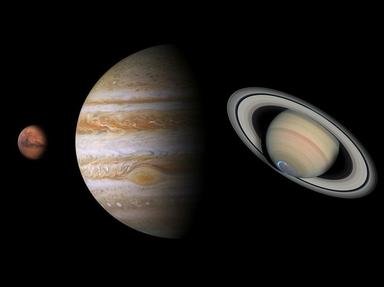Quiz Answer Key and Fun Facts
1. Ceres was classified as a planet upon discovery in 1801, then reclassified as what in 1802 before finally being reclassified once again in 2006 as a dwarf planet?
2. One could say that Ceres is the "Australia of outer space" because as of 2006, it is classed as not only a dwarf planet and asteroid, but also as what?
3. Compared to all other objects in the Asteroid Belt, approximately what percent of the mass does Ceres take up?
4. Besides being the only dwarf planet in the Asteroid Belt, what distinguishes Ceres from the other dwarf planets?
5. Beneath its crust, Ceres's mantle is thought to be composed of 100 kilometers of what?
6. Ceres is the name of the Roman goddess of agriculture. Who was her Greek counterpart?
7. Like Pluto, Neptune, and Uranus have elements named after them, (Plutonium, neptunium, and uranium) does Ceres have an element named after it?
8. When it was first found by Giuseppe Piazzi in 1801, Ceres was named Cerere Ferdinandea, the Italian version of Ceres followed by the name of King Ferdinand. However, the latter word was quickly removed a few weeks later. Why?
9. Is Ceres ever visible to the naked eye?
10. In September 27, 2007, a space probe was launched that is planned to go to Ceres. What is the name of this space probe?
Source: Author
jonthomas
This quiz was reviewed by FunTrivia editor
gtho4 before going online.
Any errors found in FunTrivia content are routinely corrected through our feedback system.

